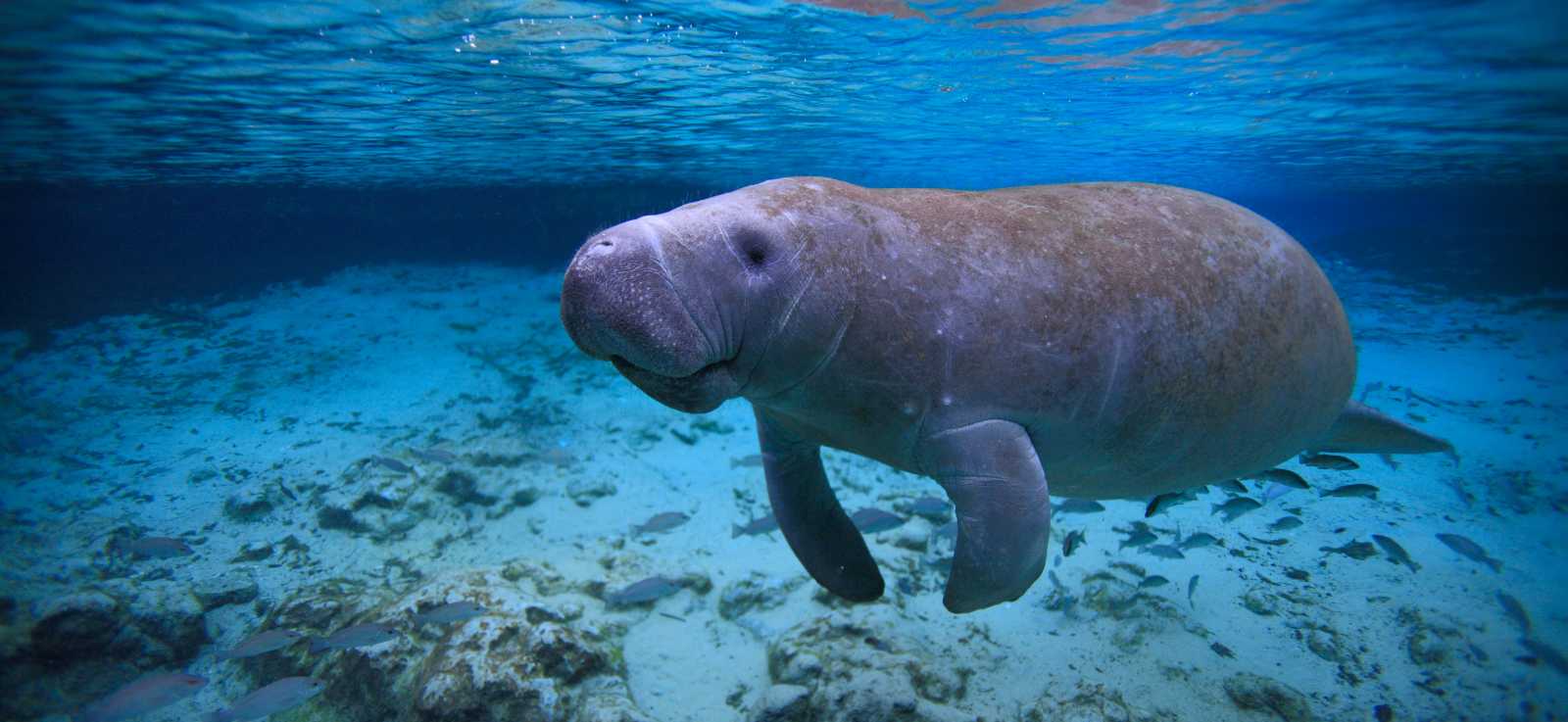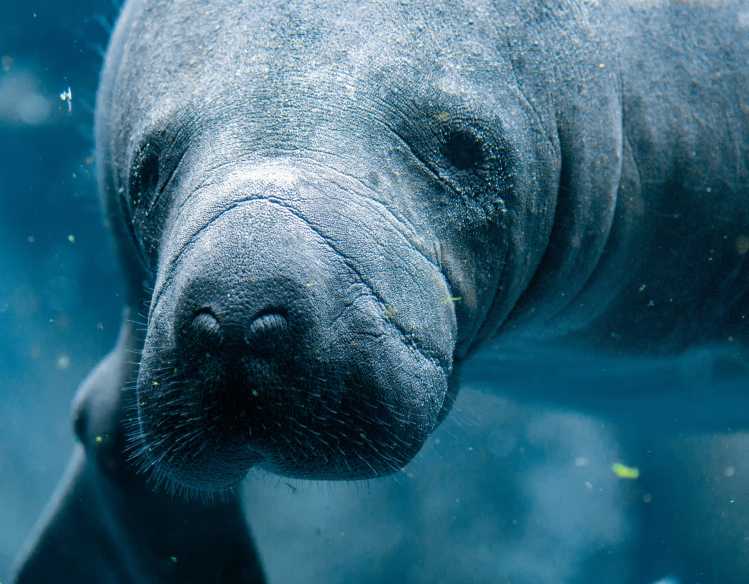
Manatee and Dugong
Learn More About Manatees and Dugongs
Manatees and dugongs are related to each other and while they are very similar in appearance and behavior, there is one key difference – their tails. Manatees have paddle-shaped tails and dugongs have fluked tails, giving it a whale-like appearance.
Their alternate name of “sea cow” is fitting as both manatees and dugongs are large, slow and gentle creatures that graze. Manatees grow on average to be 8 to 13 feet long and weigh between 440 and 1,300 pounds. Dugongs on the other hand can reach 8 to 10 feet long and weigh between 510 and 1,100 pounds.
Manatees and dugongs are light gray in color and can sometimes have algae growing on them, (as is common with slow-moving animals!) making them appear more brown or green.

The greatest threats to marine mammals are caused by people, but we can also be their greatest champions.
Sign up for email from The Marine Mammal Center to stay updated on how you can be an advocate and champion for marine mammals like manatees and dugongs.
Habitat & Population Status

Both manatees and dugongs are found in warm tropical or subtropical waters, however their habitats don’t overlap. The dugong’s range is from East Africa to Australia, while manatees are generally found in three species-specific regions.
The West Indian manatee’s range is along the coast from Florida to Brazil, the Amazonian manatee is found in the Amazon River, and the African manatee resides along the west coast of Africa.
In the past, hunters sought after manatees and dugongs for their meat, oil and bones. Both populations are now protected by law in various parts of their ranges, with Florida manatees guarded under the Marine Mammal Protection Act of 1972 and the Endangered Species Act of 1973, yet they still face human-caused threats like entanglement, boat strike and habitat loss.
Breeding & Behavior
After about a year-long pregnancy, both female manatees and dugongs birth calves that stay with them for a year and a half to two years as they gain their independence. Impressively, newborn manatees can swim on their own just an hour after they are born.
Manatees and dugongs are commonly seen alone or in pairs. Manatees have also been spotted in small groups of six or less, while dugongs have been observed in groups upwards of a hundred.
As herbivorous species, manatees and dugongs feed primarily on sea plants like grasses, weeds and algae. In fact, manatees spend most of their time feeding and resting.




















